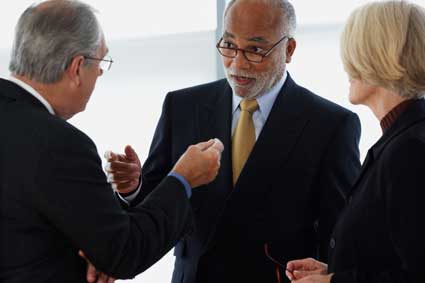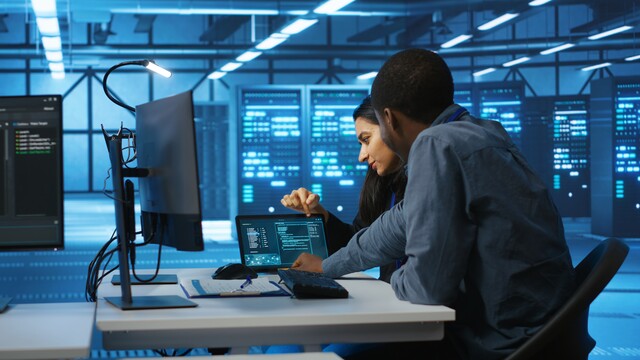The Ham Radio Phonetic Alphabet
It is essential that all hams know this alphabet because letters are not pronounced on the air � an A will always be spoken as "Alpha," and so on. The following is the alphabet used, and it should be memorized:
A � Alpha N � November
B � Bravo O � Oscar
C � Charlie P � Papa
D � Delta Q � Quebec
E � Echo R � Romeo
F � Foxtrot S � Sierra
G � Golf T � Tango
H � Hotel U � Uniform
I � India V � Victor
J � Juliet W � Whiskey
K � Kilo X � X-Ray
L � Lima Y - Yankee
M � Mike Z � Zulu
So an operator whose call sign is AC6V is calling. It is now time for you to respond, thus making your first call. Let's assume your own call sign is DF2A. When spoken, it will be read "Delta Foxtrot Two Alpha."
You are heard the CQ message above being read on the air and you will now respond as follows:
- Note the call sign of the person calling � you will repeat it to alert the operator that you are speaking to him or her. Press you microphone button and respond: "Alpha Charlie Six Victor, this is Delta Foxtrot Two Alpha�this is Delta Foxtrot Two Alpha...this is Delta Foxtrot Two Alpha, over." Notice that you are saying the call sign of the operator that you are contact once, and you are saying your own call sign three times. This is referred to as a "1 by 3 call." This is standard procedure for initiating a call, but it should be noted that if the connection is especially clear, some hams repeat their call sign only twice. It is left to your judgment.
- Listen for any responses. If the ham hears you, he or she will respond as follows: "Delta Foxtrot Two Alpha from Alpha Charlie Six Victor, thanks for your call�"
Congratulations! You have just made your first call and your first contact. If you are keeping a log of your contacts (also called QSOs), you can enter your first QSO in it.
If you are using a repeater , the above procedure is slightly different. Hams using repeaters will not issue a "CQ CQ CQ" introduction. They will simply open their call as follows: "This is AC6V, monitoring�"
Initiating a Morse Code Call
The process for initiating a Morse Code call is very similar to the above process, but naturally, you will be using Morse Code instead of your voice. This is the process:
- You will hear the Morse Code symbols of someone calling. They will use the letters "DE" to mean "from." So you will hear this expression: "CQ CQ CQ DE AC6V AC6V AC6V K." Notice the "K" at the end � it is the universal symbol for "end of transmission." Notice that the expression begins with "CQ CQ CQ," just like a voice call, but instead of saying "this is," they will tap the letters "DE" and then give their call sign. In this instance, using ham radio phonetics is not necessary � they will simply tap the appropriate Morse Code for their call sign letters: AC6V.
- Now it is your chance to respond. You will respond, in Morse Code, as follows: "AC6V DE DF2A DF2A DF2A K." Notice that you are repeating your call sign (DF2A) three times, just as you would with a normal voice call.
- Listen for a response from the caller. You might hear something like this: "DF2A DE AC6V TKS FOR THE CALL�" Notice that "TKS" is shorthand for "thanks."
Failing to Make Contact
If you attempt to make contact with someone and your call doesn't get answered, do not despair. They might be some logical explanations for the lack of response and it is all part of the troubleshooting that hams do on a regular basis.
Your radio signal might be too weak for other stations to hear you. If this is the case, simply choose another station to call. It is possible for you to hear certain stations, but your own radio signal strength might be too weak to be heard over great distances. If your signal strength is strong enough, however, there are other considerations that you should evaluate:
- Other operators might be calling at the same time you are calling. This is common and it should not discourage you. Just wait until the station (the ham) you are trying to contact is free again, or choose another person to call.
- It is possible that someone can hear you but cannot clearly understand your call. You might hear a response like this: "AC6V calling�please come again." You might also hear "QRZed?" or "Who is the station calling," at which point you would repeat your calling process described above. "QRZed" is a symbol used in ham radio that means "Who is calling me?" The actual expression is "QRZ" but the letter Z is often pronounced as "Zed."
- If the calling station misstates your call sign by a single letter or another small error, you should wait a moment to be certain that he or she is not actually responding to a station with that call sign. If you are sure that he or she is actually trying to reach you, then you would respond with this: "AC6V, this is DF2A (repeat three times)�do you have my call correct, over?"
- If repeated attempts of contacting other people are unsuccessful, contact (via telephone!) a licensed operator in your immediate area, if possible, and have him or her initiate a call. If such a call over a short distance is not successful, then you can determine that you might have problems with your equipment.
Operating as a Hobby: Casual Contact
Although many people set up a ham radio in their own home, many operators use portable radios in their cars and trucks that they use primarily when they are traveling. It might seem hard to believe, but radio signals are still the only option for communication in certain remote areas of the world. Cell phones might not work in certain areas, but radio signals can be transmitted and received from anywhere on planet Earth.
Like all hobbies, there are "tricks of the trade" that must be learned and followed in order to get the most enjoyment and fulfillment out of your endeavors. But, it should be said that rules are not always very restrictive. Casual operation of a ham radio is a very enjoyable hobby because it offers a great deal of freedom within a general framework of regulations.
The Federal Communication Commission (FCC) maintains a list of all of these rules, and all operators are encouraged to the FCC Rule Book,which is published by the American Radio Relay League (ARRL). In addition to discussing rules, the book offers new operators from tips on how to best use their equipment and how to best operate a station.
Using FM and Repeaters
When a new ham gets his or her license, it will most likely be a Technician class license, which will give you access to the entire amateur VHF and UHF bands. The most commonly used mode of communication within these bands is the use of an FM repeater.
As we have already learned, a repeater will listen for certain radio signals on specific frequencies and then repeat these signals on a different frequency. This is done simultaneously and the entire process is called duplex operation. Repeaters typically use FM instead of other methods because FM transmission is simpler. This simpler approach is conducive to protecting equipment, especially equipment that is on 24 hours a day. In addition, FM communication is relatively free of static which provides for clearer contact. The other advantage to using a repeater is that if the repeater if situated on top of a tall building, it will be able to pick up even the weakest radio signals � even from portable handheld radios. Repeaters enable the smaller, casual operator to send signals farther.
Repeaters are either professionally maintained by ham radio organizations or maintained by small operators who want to provide a service to the community. There are costs associated with its maintenance, and most hams are encouraged to join local radio clubs which help to support and defray the cost of such equipment.
Tone Access and DCS
Repeaters are not immune to interference, as is the case for all radios. They use tone access to help reduce the amount of interference from other repeaters and other strong signals in the immediate area. Tone access will effectively block all output frequencies of a repeater except for specified frequencies that it wishes to transmit signals on because all incoming signals to the repeater must have the correct tone. It checks for a specific "tone" from Ham radio operators and if these operators are not transmitting the correct tone, it will not retransmit their signals. Your radio's operating manual will have a detailed description on this method and give you instructions on how to transmit these tones. Repeater directories will also list the correct tone for each repeater in your area.
Digital Coded Squelch (DCS) also helps to reduce interference from nearby signals and it uses a slightly more modern approach to accomplish the goal. DCS enables you to digitally block all signals from everyone except the specific individual that you wish to communicate with. Like tone access, it listens for a specific series of tones from the individual and if your radio detects this series, it will allow the audio to pass. It should be noted that not all repeaters use tone access of DCS. You should refer to the repeater directory for more information.
Simplex Operation
Not all hams use repeaters. Many of them, especially very casual operators, still prefer the simple direct connection between two stations. In this case, a ham transmits signals on one frequency and the other hams receive the signals using the same frequency. This is calledsimplex operation. There are advantages to using simplex operation, including reduced traffic on the airwaves (simplex frequencies tend to be less crowded) and many local groups of hams use certain frequencies as on-the-air meeting places, so it makes contacting others easier. In fact, there are actually specific frequencies used nationally (in the United States) just for the purpose of general conversation among hams. When traveling throughout the United States, many people tune to these national channels: 52.525, 146.52, 223.50, 446.00, and 1294.5 MHz.
Setting Up Your Radio
Before you make a simplex or repeater call, you should consult your radio's manual and ensure that you know how to do the following:
- You should know how to switch between simplex and duplex (repeater) operation.
- How to use tone access and set the tone accordingly.
- Know how to use the Digital Squelch System and how to change the code you wish to use.
- You should know how to store your radio's settings.
Just Listening





















